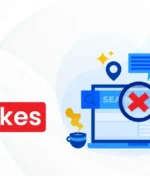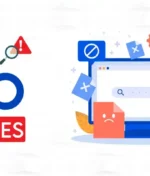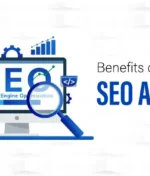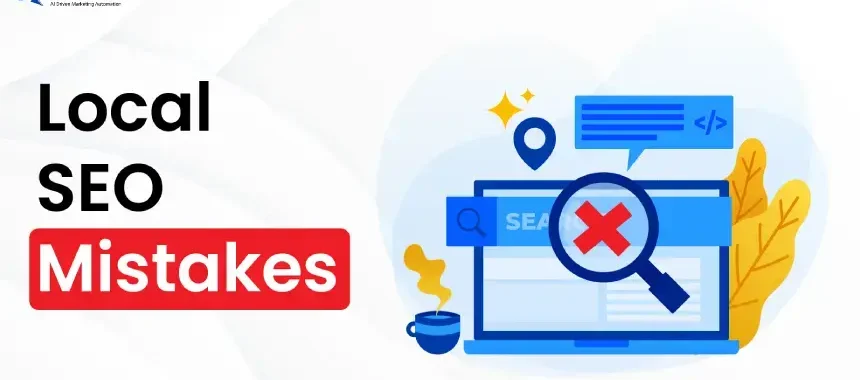
8 Local SEO Mistakes That Are Making You Invisible to Customers
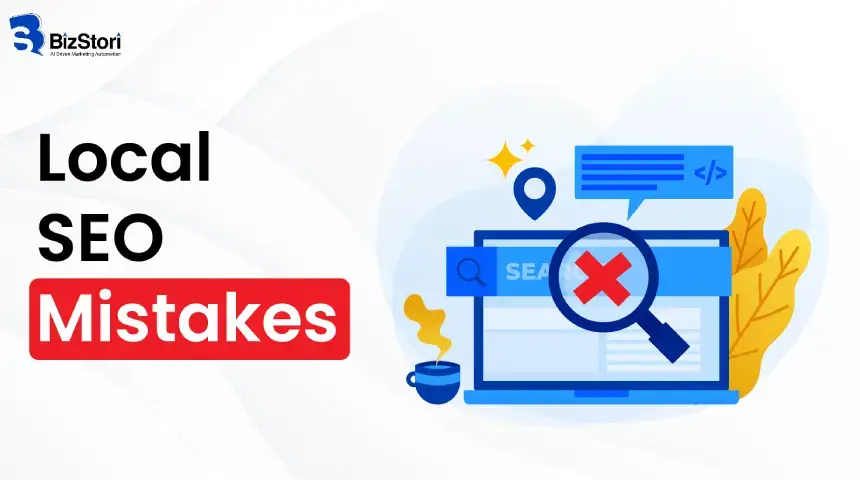
For a local business, showing up in a “near me” search is not just a marketing goal; it’s essential for survival. When a potential customer in your neighborhood needs a product or service, their first stop is Google. If you’re not visible in those local search results and the map pack, you might as well be invisible. This is where local search engine optimization (local SEO) comes in, but it’s a specialized field filled with unique pitfalls.
Many well-meaning business owners make common local SEO mistakes that sabotage their efforts, waste money, and send customers directly to their competitors. These errors often go unnoticed but can have a devastating impact on your ability to attract local foot traffic and phone calls. This guide will uncover the most frequent local SEO errors, explain why they hurt your rankings, and provide clear, actionable steps to fix them.
1. An Unclaimed or Incomplete Google Business Profile
Your Google Business Profile (GBP) is the cornerstone of your entire local SEO strategy. It’s the information box that appears in Google search and Maps, showing your hours, address, phone number, and reviews. The single biggest local SEO mistake is either not claiming this profile or leaving it incomplete.
An unclaimed profile can be edited by anyone, leaving you vulnerable to incorrect information. An incomplete one—missing hours, services, photos, or a business description—signals to Google that you’re not actively managing your presence, making you appear less credible than a competitor with a fully optimized profile.
How to Fix This Mistake:
- Claim Your Profile: Go to google.com/business and search for your business name and address to claim your profile or create a new one.
- Complete Every Section: Fill out every single field available. This includes adding your business categories, service areas, accessibility information, and a detailed description.
- Keep It Active: Regularly upload new photos, create Google Posts to announce offers, and use the Q&A feature to answer common customer questions proactively.
2. Inconsistent NAP Information
NAP stands for Name, Address, and Phone Number. This information is your business’s digital fingerprint. A critical local SEO error is having inconsistent NAP information scattered across the web. This often happens when a business moves, changes its phone number, or has slight variations in its name (e.g., “Smith’s Plumbing” vs. “Smith’s Plumbing, Inc.”).
When Google finds conflicting information in different online directories (like Yelp, Yellow Pages, and Foursquare), it becomes confused and loses trust in the accuracy of your data. This uncertainty directly harms your ability to rank in the local map pack.
How to Fix This Mistake:
- Establish a Standard: Decide on one official version of your NAP and use it everywhere, without exception. Pay attention to details like “St.” vs. “Street” or “Ste.” vs. “Suite.”
- Conduct a Citation Audit: Use a service like Moz Local or BrightLocal to scan the web for mentions of your business and identify inconsistencies.
- Clean Up Inaccurate Listings: Manually update incorrect listings or use a citation management service to clean them up at scale.
3. Neglecting Customer Reviews
Reviews are a powerful local ranking factor. They provide social proof to potential customers and give Google direct feedback on the quality of your business. A major mistake in local SEO is ignoring your reviews—either by not having a strategy to generate them or by failing to respond to the ones you receive.
A lack of recent reviews can make your business look less popular or even closed. Failing to respond to negative reviews makes you look like you don’t care about customer service, deterring potential new customers.
How to Fix This Mistake:
- Actively Ask for Reviews: Make it easy for happy customers to leave a review. You can send a follow-up email with a direct link to your Google review page or use a simple in-store sign with a QR code.
- Respond to All Reviews: Thank customers for positive reviews. For negative reviews, respond professionally and empathetically. Offer to take the conversation offline to resolve the issue. This shows both the customer and Google that you are engaged and responsible.
4. Lack of Locally Relevant Website Content
Many businesses create a generic website that fails to signal to Google where they are located and what areas they serve. Your website’s content needs to scream “local.” Without locally-focused content, search engines will struggle to connect your business to the specific geographic areas you want to rank in.
This is a classic local SEO pitfall. A plumber’s website that only talks about “fixing leaky pipes” will lose to a competitor whose site has pages about “emergency plumbing services in Chicago” and blog posts about “preventing frozen pipes in Illinois winters.”
How to Fix This Mistake:
- Create Location-Specific Pages: If you serve multiple towns or neighborhoods, create a dedicated page on your website for each one. Mention local landmarks and discuss services relevant to that specific area.
- Incorporate Local Keywords: Naturally weave your city, state, and neighborhood names into your page titles, headings, and body content.
- Write Local Blog Posts: Create content that is helpful to your local community. A roofer could write about dealing with local storm damage, while a restaurant could post about its involvement in a local food festival.
5. Ignoring On-Page SEO Basics
While local SEO has its unique elements, it still relies on the fundamentals of traditional SEO. Many local businesses make the error of ignoring on-page SEO basics, such as optimizing title tags, meta descriptions, and header tags.
Your title tag is one of the strongest signals you can send to Google about a page’s topic. A homepage title that just says “Home” is a massive wasted opportunity.
How to Fix This Mistake:
- Optimize Title Tags: Include your primary service and location in your title tags.
- Write Compelling Meta Descriptions: While not a direct ranking factor, meta descriptions convince users to click on your result. Mention your key service, location, and a unique selling proposition.
- Use a Proper Heading Structure: Use one H1 tag for your main page title, followed by H2s and H3s to structure your content logically.
6. No Local Link Building Strategy
Backlinks—links from other websites to yours—are a cornerstone of SEO. For local SEO, links from other local, relevant websites are like gold. A common mistake is having no strategy to acquire these valuable local “votes of confidence.” Google sees these links as a sign that your business is a legitimate and respected part of the local community.
How to Fix This Mistake:
- Sponsor Local Events: Sponsoring a local charity run, festival, or youth sports team often results in a link from their website.
- Join Local Business Associations: Organizations like the Chamber of Commerce often have member directories that link back to your site.
- Host a Local Event: Host a workshop or a community event at your business and promote it to local news outlets and bloggers.
7. A Non-Mobile-Friendly Website
A significant portion of local searches, especially “near me” searches, happen on mobile devices. If a user clicks on your website from a Google Maps listing and finds a site that is difficult to navigate on their phone, they will leave immediately. This high bounce rate is a strong negative signal. Having a website that isn’t optimized for mobile is one of the most damaging local SEO mistakes you can make today.
How to Fix This Mistake:
- Use a Responsive Design: Ensure your website automatically adjusts to fit any screen size, from desktops to smartphones.
- Test Your Site: Use Google’s Mobile-Friendly Test tool to check your pages and identify any issues.
- Prioritize Mobile Speed: Mobile users are impatient. Make sure your site loads quickly on a cellular connection by compressing images and optimizing code.
8. Not Tracking Your Results
You cannot improve what you don’t measure. A final but critical local SEO error is not tracking your performance. If you don’t monitor your progress, you have no way of knowing if your efforts are working, where your traffic is coming from, or which strategies are delivering a return on investment.
How to Fix This Mistake:
- Use Google Search Console: Monitor your keyword rankings, impressions, and click-through rates. Pay special attention to queries containing your city name or “near me.”
- Analyze Google Business Profile Insights: Your GBP dashboard provides valuable data on how many people found you via search vs. maps, how many requested directions, and how many called your business.
- Set Up Conversion Tracking: Use Google Analytics to track key goals, such as contact form submissions or clicks on your phone number.
Final Thoughts
Local SEO is a marathon, not a sprint. It requires a consistent and detail-oriented approach. By avoiding these common local SEO mistakes, you can build a powerful online presence that makes it easy for local customers to find, contact, and choose your business over the competition. Start by auditing your current strategy against this list and commit to building a solid foundation for long-term local growth.


